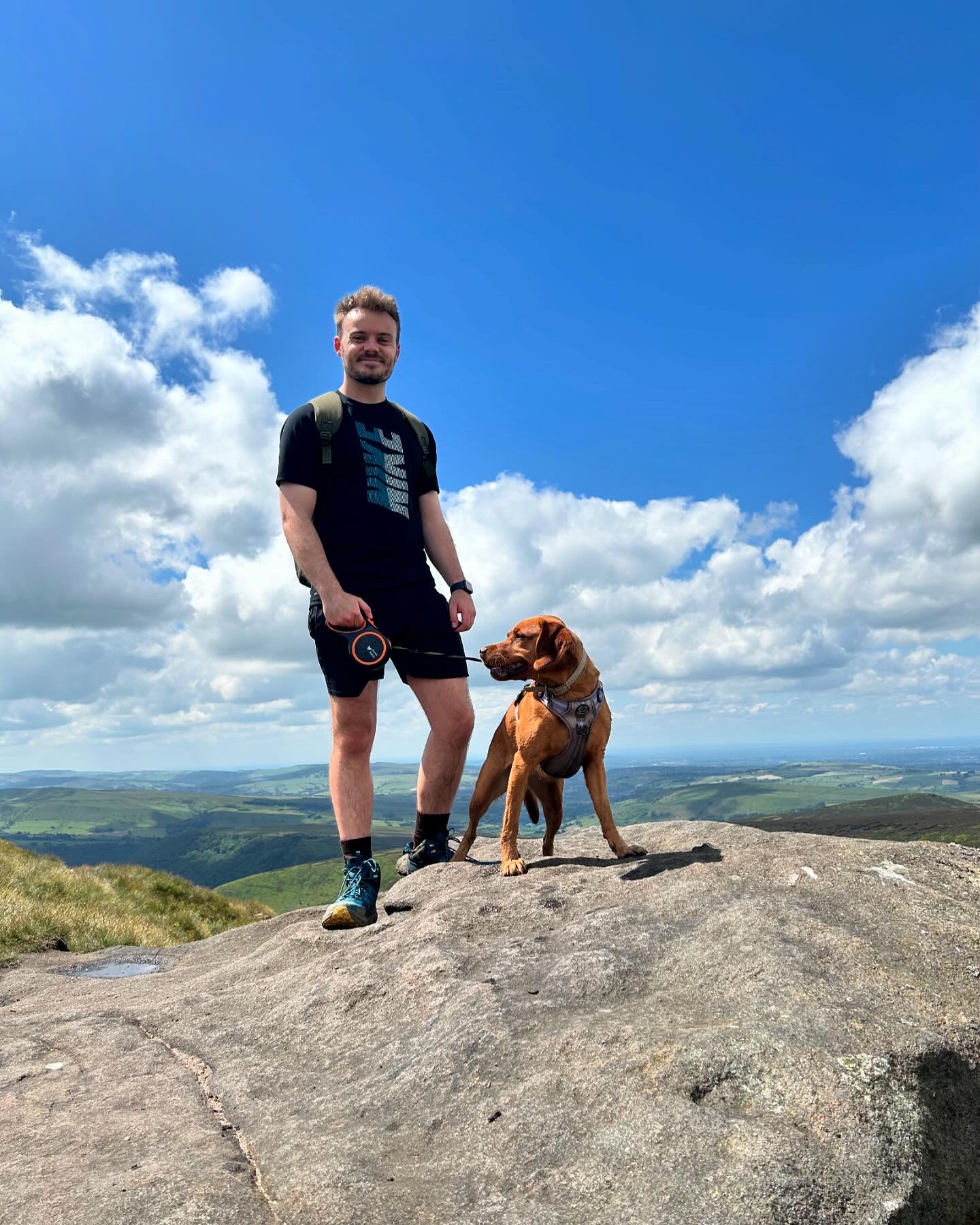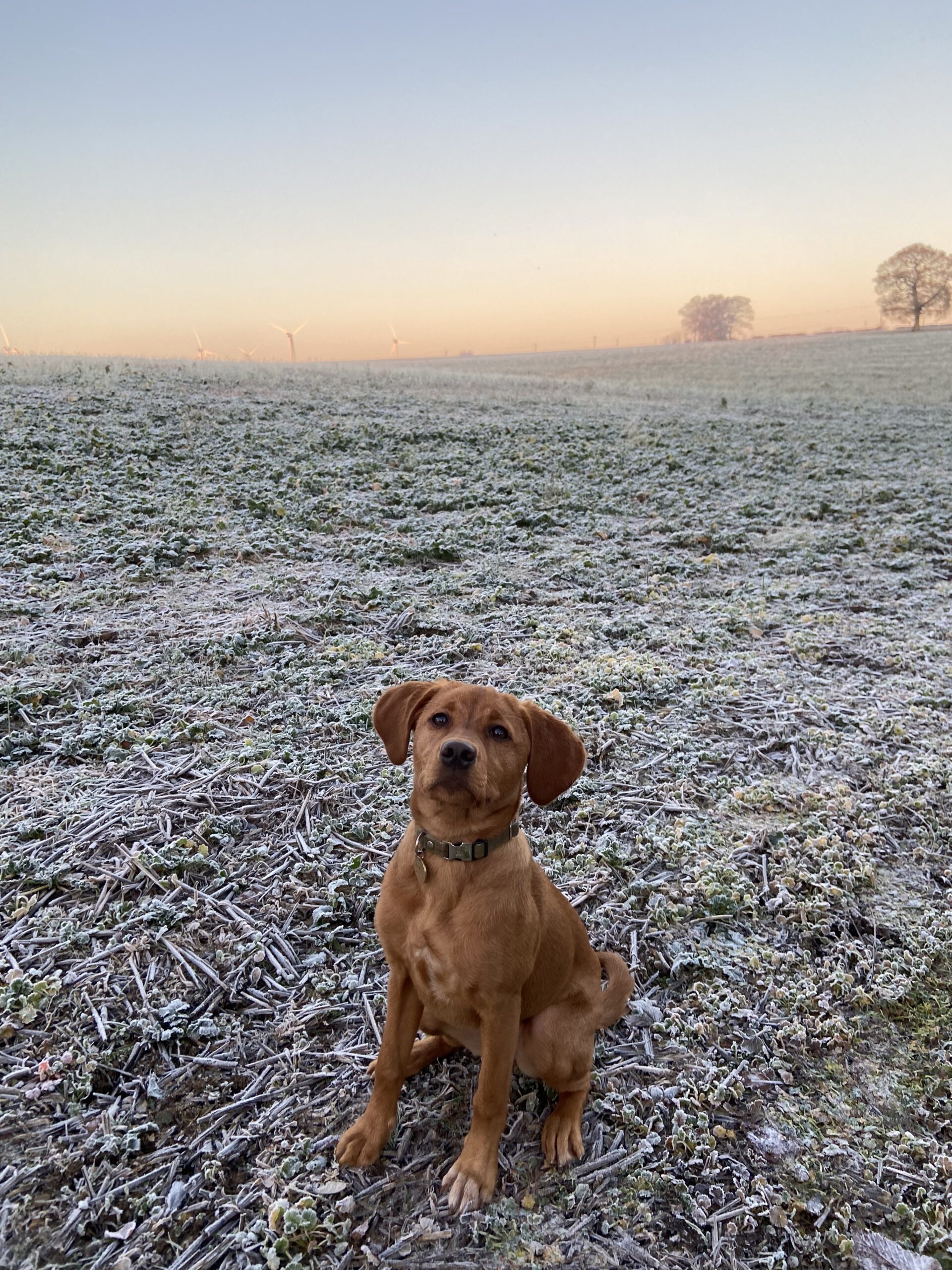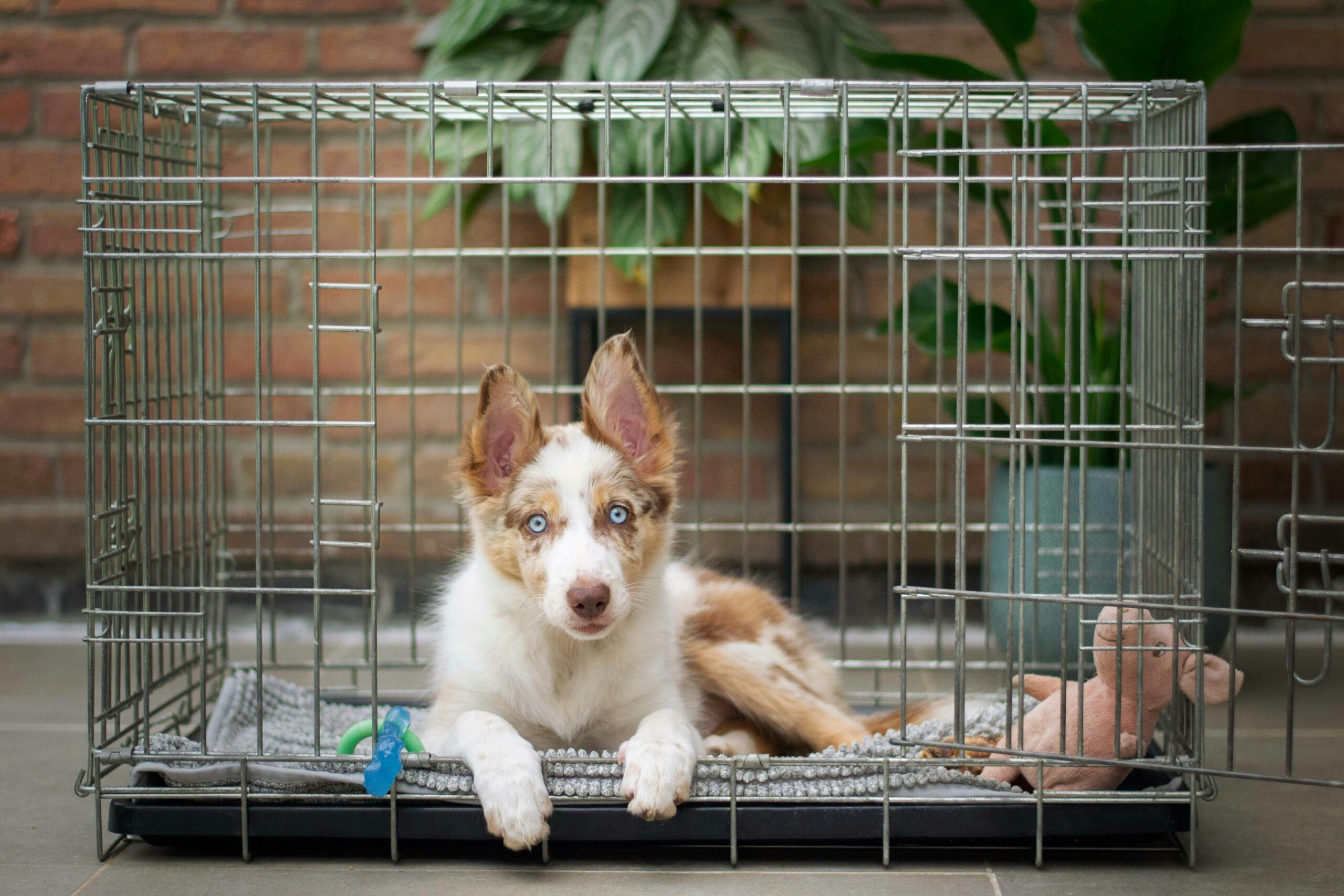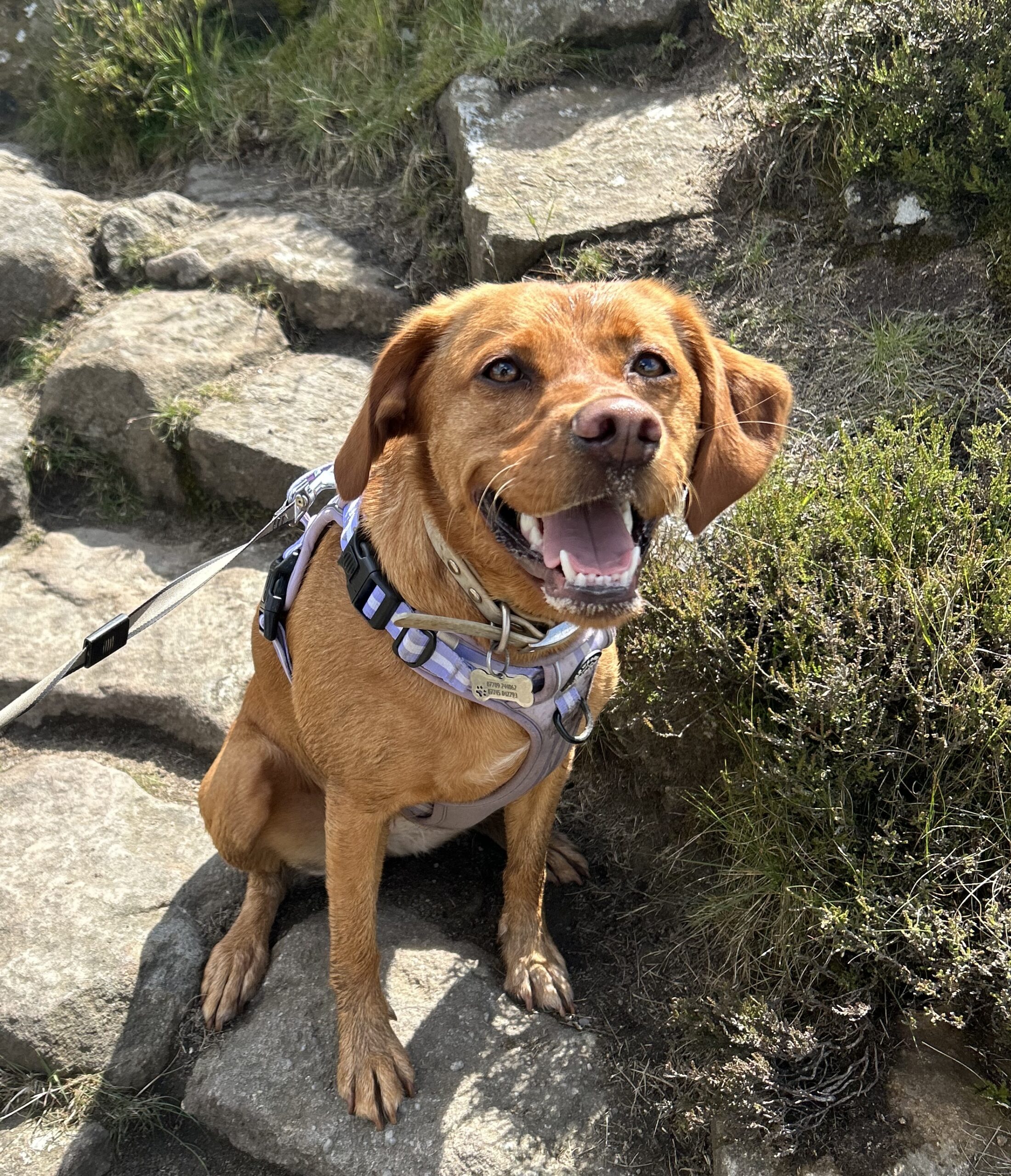Hiking with dogs can be an incredibly rewarding experience, but it requires some planning to ensure both you and your canine companion have a safe and enjoyable adventure. Whether you’re an experienced hiker or a beginner, these top tips will help you prepare for a successful hike with your furry friend. Let’s delve into each tip in detail to give you a comprehensive guide for hiking with dogs.

1. Ensure Your Dog is Vaccinated
Before hitting the trails, make sure your dog is up-to-date with all their vaccinations. Hiking with dogs exposes them to various environments where they might encounter other animals or insects. Vaccinations protect your dog from diseases that can be contracted in the wild. They can pick up illnesses from things such as dirty water, or ticks.
Consult your vet to ensure your dog’s vaccinations are current and relevant for where you live or your hiking destination. This preparation will provide peace of mind, knowing your dog is protected against potential health risks.
2. Consider Your Dog’s Age, Breed, and Fitness Level
When choosing a dog, I knew we wanted a dog who could cope with long adventures, which is why we chose a Springador. This Labrador cross breed has mountains of energy, but it was still important to tailor adventures to her age. We didn’t take her up a mountain until she was nearly 2 years old, to avoid any long lasting joint damage while she was still growing.
Consider your dog’s age, breed, and fitness level when planning your hike. Older dogs or breeds prone to joint issues may struggle with long or steep hikes. Likewise, puppies or less active breeds will need shorter, less strenuous adventures. Tailor the hike to your dog’s capabilities to ensure you all enjoy it with no injuries.
For instance, breeds like Border Collies or Siberian Huskies, known for their high energy and endurance, can handle longer, more challenging hikes. In contrast, breeds like Bulldogs or pugs might struggle due to their build and respiratory challenges.
Additionally, a senior dog might not have the stamina for a strenuous hike, so consider their comfort and health. Start with shorter hikes to build your dog’s endurance gradually. This approach helps prevent overexertion and ensures they enjoy the experience.

3. Pack Different Leads for Different Parts of the Hike
Different parts of your hike might require different types of leads. A long lead can give your dog freedom to explore in open areas, while a short lead is useful for control in crowded or hazardous spots. Bringing a variety of leads ensures you can manage your dog safely in any situation.
On a recent hike in the Peak District we took a retractable lead for the wide open spaces. This gave the dog freedom to explore and sniff around, without pulling. However it was also useful to have a short lead for busier or more dangerous areas where we wanted her to walk by our side. We even took a running lead, which is a belt with bungee lead so we could go hands free. (I have this lead from Tuff Pupper).
It’s better to take multiple options so you are ready for any scenario, it doesn’t matter if you don’t need them all. You might find that 10KM (or 6 miles) into your hike one of the leads is giving you a blister on your hand, and you want to swap for a different one – speaking from experience!
The key is to adapt to the environment and ensure your dog’s safety while maintaining your control over them.
4. Bring Plenty of Water and Snacks for You and Your Dog
Hydration and nutrition are crucial when hiking with dogs. Pack enough water for both of you, especially on hot days or longer hikes. Portable dog bowls and water bottles are convenient options. I have a water bottle exactly like this one from Amazon, with a silicone bowl that flips out so you can squirt the water straight into it. Don’t forget to bring snacks to keep your energy levels up and to reward your dog along the way.
Dehydration can be a serious issue, especially for dogs who might not always show obvious signs of thirst. Make regular stops to offer your dog water, ensuring they stay hydrated throughout the hike. Snacks like dog biscuits or high-protein treats can provide an energy boost and keep your dog motivated. Sharing a snack break can be a bonding moment, giving you both a chance to rest and recharge. Remember – to eat your snack and fuel up before you start feeling weak!

5. Bring a Towel for the Car
Dogs love to explore, which often includes splashing in water. Bring a towel for the car to dry your dog off after the hike. This helps keep your car clean and your dog comfortable on the ride home.
Even if you don’t plan on your dog swimming, they might find a muddy puddle or decide to roll in something messy. A towel is useful for cleaning them up before getting back into the car. It’s also handy for wiping off any dust or debris they might pick up along the way. Keeping your car clean is one thing, but ensuring your dog is dry and comfortable after a hike is also important. A wet dog can get cold quickly, even in mild weather, so drying them off helps prevent any discomfort or health issues.
6. Plan Your Route and Watch Out for Livestock
Planning your route is essential when hiking with dogs. Check if the hike is dog-friendly and be aware of any livestock or wildlife in the area. A hike with lots of scrambling might not be ideal for your dog, and a longer but flatter route to the summit might be necessary. Be prepared to keep your dog on the lead when necessary to avoid disturbing animals and to keep your dog safe.
Researching your trail beforehand ensures you choose a route suitable for dogs, with safe terrain and no restrictions. Some hiking routes will have specific rules regarding leashes, so just keep an eye out for signs asking you to keep your dog on a lead.
This is most likely going to be the case when crossing through any areas where livestock are grazing. Dogs have a natural instinct to chase, which can stress livestock and potentially cause injury. On a recent hike I unfortunately witnessed a border terrier chasing a sheep and it’s lamb, with the owner chasing the dog and unable to get them under control. In the UK, farmers have the right to harm your dog if your dog is chasing or harming their livestock.
7. Be Considerate of Other Hikers and Dogs
While hiking with dogs, always be considerate of other people. Keep your dog under control and be prepared to step aside to let others pass. Not everyone is comfortable around dogs, and other dogs might not be friendly. Good trail etiquette helps ensure everyone enjoys their hike. I have been on hikes before where someone has warned me their dog is nervous and they appreciated us giving them a wide berth whenever we passed each other.
When you see other hikers approaching, especially if they have dogs, it’s courteous to step to the side of the trail and keep your dog close. If you see another dog walker with their dog on a lead, it’s common courtesy to put your dog on a lead as well. Not all dogs are social or friendly, and some people may be afraid of dogs. By keeping your dog under control and respecting others’ space, you create a pleasant experience for everyone on the trail. If your dog tends to bark or lunge at other dogs, work on these behaviours before attempting a hike in a populated area.
8. Make Sure Your Dog Has an ID Tag
Accidents happen, and dogs can sometimes get lost. Make sure your dog has an ID tag with your contact information. This increases the chances of a quick reunion if your dog wanders off. It is the law in the UK that all dogs are microchipped and have an ID tag on their collar or harness.
If your dog gets lost, having both an ID tag and a microchip greatly increases the chances of them being returned to you quickly. Additionally, it’s a good idea to carry a recent photo of your dog, which can be helpful in enlisting the help of other hikers if your dog goes missing. If you’re anything like me, you will have thousands of photos of your dog on your phone to choose from.
9. Check for Ticks
After your hike, thoroughly check your dog for ticks. These parasites can carry diseases and are more prevalent in certain areas. Remove any ticks promptly and consult your vet if you find any attached to your dog.
Ticks are more common in wooded areas and tall grass, so pay particular attention to these environments. After your hike, inspect your dog thoroughly, paying special attention to areas like the ears, neck, and underbelly. Use a tick removal tool to safely remove any ticks you find. If you’re unsure how to do this, ask your vet or look online for a demonstration. Regular use of tick preventatives can also reduce the risk of tick bites. Checking for ticks is a vital post-hike routine to prevent the transmission of diseases like Lyme disease, which can have serious health implications for both dogs and humans.
10. Train Basic Commands
Training your dog in basic commands like ‘sit,’ ‘stay,’ and ‘come’ can greatly enhance your hiking experience. These commands can help you manage your dog in various situations, ensuring their safety and the safety of others on the trail.
A well-trained dog is easier to control and safer to hike with. Commands like ‘sit’ and ‘stay’ can prevent your dog from jumping on other hikers or chasing wildlife. ‘Come’ is crucial for calling your dog back if they wander off.
Training should start in a controlled environment and gradually be practiced in more challenging situations. So make sure to practise out on your daily walks and ensure you have a good level of trust in your dog, before taking them on a long hike. Training your dog ensures they respond well to your commands, making the hike more enjoyable and less stressful for both of you.
Conclusion
Hiking with dogs is a fantastic way to enjoy nature and bond with your pet. By following these tips, you can ensure a safe, enjoyable, and memorable hiking adventure for both you and your dog. Remember, preparation is key – from ensuring your dog’s vaccinations are up-to-date to planning a suitable route and packing all necessary supplies. With thoughtful planning and consideration, hiking with dogs can become a cherished activity for you and your furry friend. Happy trails!











